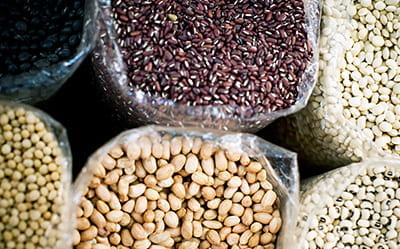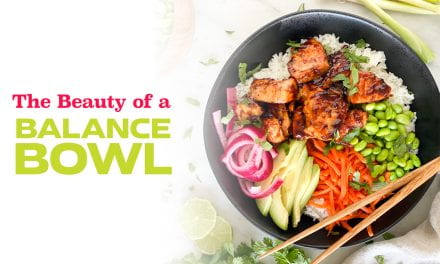For my birthday I received a cookbook titled Salt Fat Acid Heat, Mastering the Elements of Good Cooking by Samin Norsat. Over the next 3 months will be a book review, a 4-part miniseries exploring each element and its importance according to Samin Norsat. I will share some of the recipes or tips found in the book. If you missed the first installment, The Truth on Salt, you can find it here. In the second part of the series I will focus on what Sarmin calls the second most important component of good cooking, fat.
A Life without Fat? Pointless
Fat is a macronutrient, a basic element in cooking is also a building block of life along with protein, carbohydrates and water. For a long time, fat, like salt, was considered unhealthy. Fat provides cushioning for organs, insulation from the cold, nutrient absorption and most importantly energy for activity. 1 gram of fat provides 9 cal of energy, just over double that of protein and carbohydrates (4 cal). Fat plays 3 distinct roles in the kitchen: as a main ingredient, as a cooking medium and as a seasoning.
Roles explained:
- Main Ingredient – Fat in a burger renders, basting from within, butter provides tender and flaky textures in pastry, cream and egg yolks determine how smooth and decadent it will be
- Cooking Medium – Can be heated to extreme temperatures to allow for foods to be cooked in them.
- Seasoning – “toasted sesame oil will deepen flavor in a bowl of rice, dollop of sour cream in soup or mayonnaise spread on a BLT increases its succulence”
Flavor Savor
Fat carries flavor. “Fat coats the tongue allowing various aromatic compounds to stay in contact with our taste buds” Time to experiment. Peel and slice to cloves of garlic. Gently sizzle one clove in a couple tablespoons of water and the other in the same amount of olive oil. Taste a few drops of each liquid. The clove cooked in the oil will carry a much more intense garlic flavor than the clove cooked in water.
The flavors of faT
Olive Oil – A staple in Mediterranean cooking. As a cooking medium it is excellent for soups, pastas, braises, roasted meats and vegetables. Use it as a main ingredient in mayonnaise, vinaigrette and condiments. As a seasoning, drizzle it over beef carpaccio or baked ricotta. Sarmin suggests using TASTE not PRICE as your best guide to choosing an olive oil.
Nuts and Seeds – Neutral tasting seed and nut oils can be used when you do not want fat to flavor a dish. These oils have a high smoke point allowing them to withstand elevated temperatures required to crisp or brown foods. Coconut oil can add a tropical flavor to any dish that it’s used. Specialty seed and nut oils, such as sesame, toasted hazelnut or pumpkin seed oil, can be used with to season a dish.
Animal Fat – Salt requires water to dissolve, fatty meats will take time to dissolve, season early and carefully any fatty meats.
Butter – Butter is one of the most versatile fats, it can be manipulated in to several forms and used as a cooking medium, main ingredient, or seasoning. Butter is available salted, unsalted or cultured. Unlike oil butter is not pure fat. Butter contains water, milk protein and whey solids.
How Fat Works
Crisp – is a result of foods contact with hot fat and water evaporating from the surface of the food. Do everything you can to keep the pan and fat hot to achieve a golden crust
Creamy – When two liquids come together that normally do not mix, such as fat and water. Butter, ice cream, mayonnaise and even chocolate are examples of an emulsion creating something creamy.
Flaky and Tender – To achieve flakiness some of the fat is worked in to the flour to develop minimal gluten. To achieve the signature flakes the fat must be very cold so that some of it can remain in distinct pieces. To achieve tenderness fat must be incorporated in to the flour early in the dough making process. For the best result use soft or liquid fat.
Recipe
All Butter Pie Dough
Makes two 10 oz balls of dough enough for two single crust 9” pies or one Chicken Pot Pie
- 2 ¼ cups of all-purpose flour
- 1 generous tablespoon of sugar
- Large pinch of salt
- 16 tbsp. of chilled unsalted butter, cut into ½ inch cubes
- ½ cup of ice water
- 1 teaspoon of white vinegar
Place the flour, sugar and salt in a bowl to be frozen for 20 minutes. If mixing with a stand mixer freeze the paddle attachment as well. Freeze the butter and ice water as well.
While mixing the ingredients slowly add the cubed butter a few pieces at a time, mix until the butter looks like broken walnut pieces. Distinct bits of butter lead to flakes in the dough, avoid over mixing.
Add the vinegar in a thin stream. Add just enough water and mix as little as possible until the dough barely holds together.
If the dough crumbles apart very easily and feels very dry, add more water. If it holds together or breaks into a few chunks it is done.
Wrap the dough in plastic wrap and chill for at least 2 hours or overnight.
Freeze unwrapped, prepared dough for up to 2 months. Make sure to double wrap it in plastic and then wrap it in aluminum foil to prevent freezer burn.


